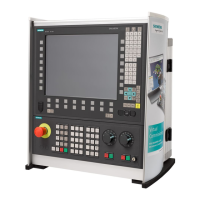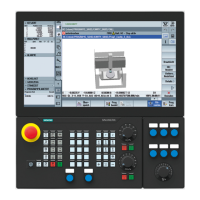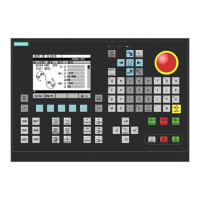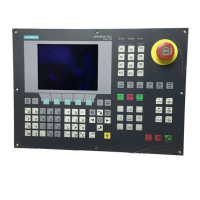4
Creating a ShopTurn Program 08/2005
4
♥ Siemens AG, 2005. All rights reserved
4-144 SINUMERIK 840D sl Operation/Programming ShopTurn (BAT) – 08/2005 Edition
D (Cutting edge)
For tools having several cutting edges, there is a set of individual tool
offset data for each cutting edge. For these tools, you must select or
specify the number of the cutting edge with which you would like to
carry out the machining.
Caution
If you specify the wrong cutting edge number for some tools (e.g. a flat
chamfering drill with guide pilots or step drill) and then traverse the
tool, collisions may result. Always ensure that you input the correct
cutting edge number.
Radius compensation
ShopTurn automatically takes the tool radius compensation into
account during all machining cycles, with the exception of track milling
and straight. For track milling and straight, you have the option of
programming the machining with or without radius compensation. The
tool radius compensation is modal for straight, i.e. you have to
deselect the radius compensation again if you want to traverse without
radius compensation.
Radius compensation to the right of the contour
Radius compensation to the left of the contour
Radius compensation off
Radius compensation remains as previously set
F (feed)
The feedrate F, also called machining feedrate, specifies the speed at
which the axes move during machining of the workpiece. The
machining feedrate is input in mm/min, mm/rev or in mm/tooth. The
feedrate for milling cycles is automatically converted on switchover
from mm/min to mm/rev and vice versa.
The input of the feedrate in mm/tooth is only possible during milling
and ensures that each cutting edge of the milling machine is cutting
under the best possible conditions. Feed per tooth corresponds to the
linear path traversed by the mill when a tooth is engaged.
For milling and turning cycles, the feedrate during roughing is relative
to the milling or cutting center-point. This is true during finishing too,
with the exception of contours with inside curves. In this case, the
feedrate is relative to the contact point between the tool and the
workpiece.
The maximum feedrate is determined via machine data.
Please refer to the machine manufacturer's instructions.
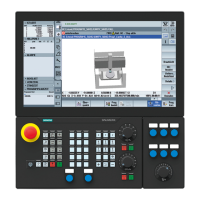
